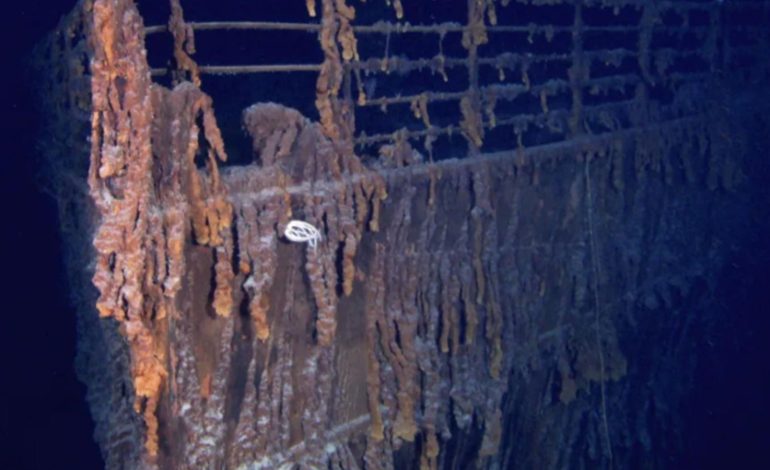New Expedition Highlights Titanic’s Ongoing Decay and Unveils Rare Artefact

Recent underwater exploration of the Titanic has revealed significant changes to the famous shipwreck, underscoring its slow but steady deterioration.
A new expedition conducted this summer has documented the loss of a large section of the ship’s railing and discovered a rare artefact previously lost.
The iconic image of the Titanic’s bow, which has become synonymous with the ship’s tragic story, has been altered over time. During the most recent dives, remotely operated vehicles (ROVs) captured images of a 4.5-meter (15-foot) section of railing that had detached and fallen to the seafloor. This railing was prominently featured in the film “Titanic” during a memorable scene involving the characters Jack and Rose.
“The bow of Titanic is just iconic, and that’s what you think of when you think of the shipwreck. And it doesn’t look like that anymore. It’s just another reminder of the deterioration that’s happening every day. People ask all the time: ‘How long is Titanic going to be there?’ We just don’t know but we’re watching it in real time,” says Tomasina Ray, Director of Collections at RMS Titanic Inc.
The expedition also highlighted the ongoing effects of microbial activity on the ship’s metal structure, which is forming “rusticles”—stalactite-like structures created as microbes consume the iron in the wreck.
In addition to structural changes on the ship, the team discovered the Diana of Versailles statue. This 60-centimeter-tall bronze sculpture, once a centerpiece in the Titanic’s first-class lounge, was discovered in 1986 but has since disappeared. The statue was discovered lying face up in the sediment of the debris field.
“It was like finding a needle in a haystack. To rediscover it this year was momentous.” says James Penca.
He argued that recovering such artifacts preserves the ship’s legacy and provides historical insight, despite ongoing debates about the ethics of disturbing the site.
The most recent expedition, led by RMS Titanic Inc, included over two million images and 24 hours of high-definition footage of the wreck and the surrounding debris field. The company, which has exclusive salvage rights, intends to return next year to continue its work, including efforts to recover the Diana statue.
In April 1912, the Titanic sank after colliding with an iceberg, killing more than 1,500 people. It was discovered in 1985, and since then, numerous expeditions have attempted to investigate and preserve the wreck. The ship’s current condition, including the loss of notable features and the presence of rusticles, demonstrates the long-term impact of more than a century of underwater exposure.
With input from Sky News, BBC and Independent.








